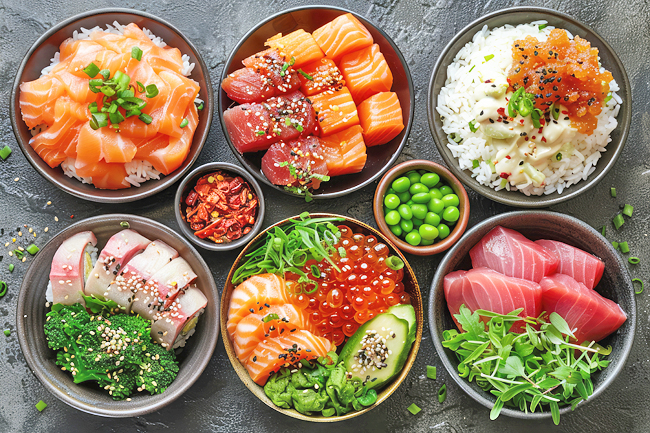ANN/THE DAILY STAR – With an emphasis on unprocessed and fresh food, Japanese food can boast as one of the healthiest dietary choices in the world. Rice, vegetables, and fish are the staples of the cuisine. Of course, meat has a place but in the past, under the influence of Buddhist vegetarianism, meat was practically shunned. However, modern Japanese cuisine features all sorts of ingredients.
THE DOMINANCE OF SOYA
Soya beans have been part of Japanese culture for more than 2,000 years. High in protein, soya beans have been a popular source of protein for vegetarians for years.
Edamame are whole, immature soya beans that are boiled or steamed and served with salt or other condiments. High in protein and low in carbs, like many soya-based foods, it can lower cholesterol levels. With the added benefit of vitamins and minerals.
Soya sauce is a frequently used ingredient in modern days but the soy sauce we find at our local grocery store is a far cry from the authentic Japanese condiment. It takes a very carefully maintained delicate process and about six to eight months to produce soy sauce. Soya sauce contains antioxidants and antimicrobial properties so it can promote digestion.
Tofu is another soy-based food which is a meat substitute. Miso is a paste made from fermented soybeans that can be used as a soup base or even condiments.
Fermented soy beans are called Natto which comes with a strong flavour and a sticky texture. It’s a breakfast item but not particularly popular amongst foreigners.

VEGETABLES AND SEAWEED
Vegetarian food habits are gaining more popularity these days. According to the Harvard School of Public Health, there is strong evidence that a diet rich in fruits and vegetables can lower the risk of heart disease and stroke. Seaweed is yet another popular food choice in Japan, wakame being the most popular kind. It is low in calories and rich in vitamins, minerals and fibre. Seaweeds in general are rich in iodine and tyrosine, which is great for your thyroid glands. They are said to reduce the risk of heart disease and diabetes. And of course, they have a very unique taste.
FISH OVER MEAT
Meat is present in Japanese dishes but it’s the fish and seafood that reigns the battle of tastes. Different regions of Japan have different kinds of food that stand out.
Dried octopus is a good source of the “good” fat, Omega-3 with much-needed calcium, phosphorous, and iron. So, it can help prevent anaemia, relieve fatigue, and restore eyesight. Bonito fish on the other hand can be really helpful for your teeth and bones.
In general, fish is a great source of protein. Because of its lower calorie and saturated fat, it is considered to be a comparatively healthier choice than meat.
We do not know if Japanese people think about this regularly but they sure love their seafood.
Worldwide popular dish sushi is another delicacy in Japan. Even though sushi originated in China, it has been involved in Japanese culture long enough.
Fish (usually raw but can be cooked too) is a key ingredient for sushi. However, in recent years there has been vegetarian sushi, which can be, much to many people’s surprise, full of flavours and a memorable experience.
Having one of the highest life expectancies in the world, one can imagine that it has something to do with their food and eating habits. Japanese cuisine is not just healthy, it embodies their culture as well.
In 2014, UNESCO recognised Washoku, a traditional Japanese cuisine, as an intangible cultural heritage. With all the colours, flavours and health benefits they hold, Japanese cuisine is a must-try. – Ashif Ahmed Rudro




